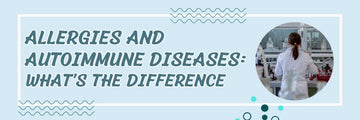Blog
Bioresonance Testing Explained
by
Cris Wootton
on
May 16, 2022
The environment we reside in today is full of toxins and other environmental stressors like pesticides, EMFs, toxins, radiation, plastic, and chemicals in our foods and drinks. These pollutants often cause a disruption in normal biological processes and lead to the loading of toxins in our systems. Of course, the body can naturally cancel out these toxins, but when there's an overload of toxins, that's when you fall ill.
What is Bioresonance Therapy?
Bioresonance is a type of holistic therapy used to detect and treat illnesses. We all understand that everything operates at a certain frequency. So, bioresonance therapy uses a specific machine to measure the wavelength frequencies coming from the body to diagnose disease.
To explain it simply, let's say you have exposed yourself to lots of toxins and pollutants. The bioresonance therapy machine can measure the frequency and know there are too many toxins in your body, thus reducing this toxins overload. By reducing the toxins overload, your body can better self-regulate.
How does bioresonance therapy work?
The theory supporting bioresonance therapy (BRT) is that every cell in the body has a particular frequency, leading to an electromagnetic field and unique frequency patterns. Normally, your cells will produce different frequencies on the same wavelength. But when there is a developing disease, there is a disruption in these frequencies. For example, let's say one is undergoing stress, leading to depression. There will be a different frequency than the body emits compared to when they're completely stress-free.
The BRT theory also specifies that cells communicate amongst each other through biophotons at certain frequencies. According to biophysics researchers, the body can control the body's biochemical level, ultimately controlling the biological structure of organs. So, BRT can easily manipulate these cells' frequencies when the frequencies show abnormality, meaning there's a developing illness.
Proponents of bioresonance therapy believe that getting hooked up to a bioresonance machine will diagnose illness in your body and change back the frequencies to a 'natural' wavelength. Manipulating your cells' frequencies means changing them back to their previous frequency before the toxins, pollutants, and other factors that may have corrupted cells in your body.
What has bioresonance treated?
Bioresonance is said to treat nearly all types of illnesses. But until now, only a handful of studies have been conducted and found to treat illnesses like;
-
Stomach pain: According to a study, bioresonance therapy can improve non-organic gastrointestinal complaints {1}.
-
Smoking cessation: During the study, bioresonance resulted in a 77.2% smoking cessation compared to 54.8% in the placebo group {2}. The study concluded that bioresonance is effective in the clinical treatment of smoking cessation without causing any adverse effects.
-
Cancer: Despite the lack of studies backing up the results of using bioresonance therapy for cancer, bioresonance users say that it works by suppressing active tumor genes.
-
Fibromyalgia: When bioresonance is used against all the other treatment methods for fibromyalgia, it produces more results without any side effects on the patients {3}. There is a 72% muscular improvement in muscular pain.
-
Asthma, and eczema: Varying studies prove that bioresonance testing for Sensitivites works. Bioresonance sensitivity test works best in children with sensitivities according to studies {4}.
-
Rheumatoid arthritis: Bioresonance therapy helps rheumatoid arthritis by reversing the function of antioxidants in the body. By doing so, the antioxidants help fight off free radicals, thereby lessening tissue damage in people with RA.
-
Overtraining syndrome: Also known as burnout, occurs when athletes don't give the body enough time to recover fully. Bioresonance helps overtraining syndrome by bringing down the heart rate and blood pressure and calming down the sympathetic nervous system, which normally activates the fight or flight response.
Bioresonance Test and Sensitivity Testing

Our Allergy Test Box Kit
Allergy testing is a simple procedure that requires a prick on your finger to check for antibodies in your blood linked to your allergy symptoms. However, some people are afraid of pricking their skins or can't stand the sight of the slightest bit of blood. In that case, bioresonance is a simpler way for those seeking painless sensitivity testing methods. Either way, both methods will help you realize your sensitivities, so you can start an elimination diet that will help you recover from yourr symptoms.
Suppose you want a blood test, in that case, it's safe to use our
Allergy Test kits that you can order online and send back to the labs for comparison against common food allergens in the environment, drinks, and food.
Final thoughts on bioresonance testing
Bioresonance is a great way to treat the body and check for sensitivites painlessly. Sensitivies can be problematic and lead you to eliminate various foods from your diet that aren't healthy. But with an allergy test or bioresonance therapy, you can easily discover the cause of your food sensitivites and successfully treat them by eliminating foods containing those items. Bioresonance testing is painless and will give you an easy time getting treatment or discovering why your body is acting up.
References
- Nienhaus, J., & Galle, M. (2006). Plazebokontrollierte Studie zur Wirkung einer standardisierten MORA-Bioresonanztherapie auf funktionelle Magen-Darm-Beschwerden . Forschende Komplementarmedizin (2006), 13(1), 28–34. https://doi.org/10.1159/000090134
- Pihtili A, et al. (2014). Evidence for the efficacy of a bioresonance method in smoking cessation: A pilot study. DOI:
10.1159/000365742
- Gogoleva E. F. (2001). New approaches to diagnosis and treatment of fibromyalgia in spinal osteochondrosis. Terapevticheskii arkhiv, 73(4), 40–45 (https://pubmed.ncbi.nlm.nih.gov/11494446/)
- Galle M. (2009). Bioresonance therapy with children suffering from allergies — An overview about clinical reports. DOI:
10.1016/j.eujim.2009.08.023
 Our Allergy Test Box Kit
Our Allergy Test Box Kit













